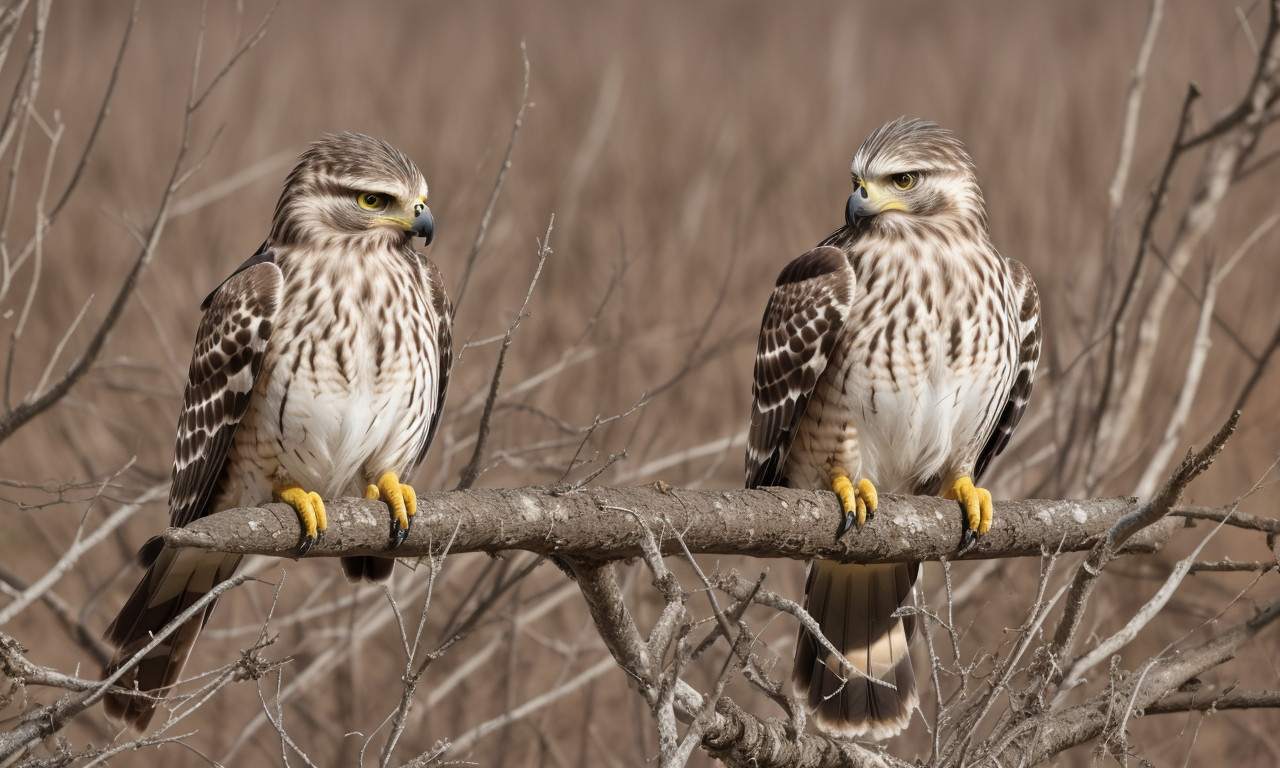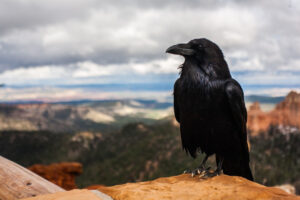Arkansas, a state revered for its lush landscapes and abundant wildlife, is home to a stunning spectrum of bird species that capture the imagination of bird watchers and nature enthusiasts alike. Among these winged wonders are the hawks – majestic predators that soar through the skies of The Natural State with grace and might. These avian masters of the air reign supreme, embodying the wild spirit that Arkansas is celebrated for.
Hawks are not just mere birds––they are symbols of freedom, strength, and the intricate balance of our ecosystems. Observing these raptors in their natural habitat offers a glimpse into the raw beauty and complexity of life in Arkansas’ skies. The following journey takes you deep into the world of these awe-inspiring creatures and offers insight into their lives, behaviors, and the integral role they play in the states’ diverse ecological tapestry.
The Diverse Hawk Population of Arkansas
The Natural State boasts a variety of hawk species, each with unique characteristics and behaviors that contribute to the dynamic avian community of the region. These raptors are found across different habitats, from the delta wetlands to the Ozark Mountains, showcasing their adaptability and the ecological richness of Arkansas.
Related article; ducks in georgia
Red-Tailed Hawks: A Common Sight
One of the most common and recognizable hawks in Arkansas is the Red-Tailed Hawk. This bird is easily identified by its broad, rounded wings and the telltale reddish hue on its tail, from which it gets its name. They are often seen:
Related article; texas ducks
- Perched atop trees and poles along highways
- Gliding over open fields in search of prey
- Displaying their trademark screech, which is often used in movies as a universal bird of prey call
Sharp-Shinned Hawks and Cooper’s Hawks: Agile Forest Dwellers
The Sharp-Shinned Hawk and Cooper’s Hawk are similar in appearance but differ in size. These agile birds navigate through the dense forests of Arkansas with remarkable speed, hunting smaller birds that inhabit the same woodland spaces. Here are some distinguishing traits:
Related article; owls in tennessee
- Sharp-Shinned Hawks are the smaller of the two, with delicate features and a preference for thick canopies.
- Cooper’s Hawks possess a more robust build and are often seen darting through the trees in pursuit of prey, their underlined coppery chests shining in the dappled sunlight.
Broad-Winged Hawks: Migratory Spectacles
Every fall, the Broad-Winged Hawk takes to the skies for an impressive migration southward. These hawks can be spied during this seasonal movement in large groups, known as kettles, which offer a magnificent spectacle to behold against the backdrop of Arkansas’s vibrant autumn colors. They are celebrated for:
Related article; woodpeckers indiana
- Their distinctive whistle that pierces through the forest ambiance
- The orderly, communal migration strategy they employ
Swainson’s Hawks: Long-Distance Travelers
The Swainson’s Hawk is a raptor of the open plains and a notable long-distance migrant. Found in Arkansas primarily during the migration seasons, these hawks are characterized by:
Related article; woodpeckers in iowa
- Their endurance in travel, with migratory paths stretching from the Great Plains to Argentina
- Their varied diet, which includes insects and small mammals, demonstrating their ecological adaptability
Hawks and Their Role in Arkansas’s Ecosystems
Hawks serve as keystone species in Arkansas’s environmental infrastructure. Their presence and predation patterns have a cascading effect on the biodiversity and health of local ecosystems.
Related article; illinois hawk
Natural Pest Control Agents
By preying on rodents and insects, hawks help regulate populations that might otherwise damage crops and vegetation. This natural pest control is a perfect example of nature’s balance, as hawks:
Related article; hawks of oklahoma
- Limit the spread of crop diseases by curbing rodent populations
- Maintain the insect populations, ensuring that they do not overrun the ecosystem
Indicators of Environmental Health
The health of hawk populations is a reflection of the overall environmental health. Hawks are at the top of the food chain, and their susceptibility to pollutants and habitat loss often signals wider ecological issues.
Related article; sparrows in michigan
- A decline in the hawk population can suggest an either direct or indirect environmental problem, such as pesticide use or deforestation.
- Conservation efforts for hawks have broader implications, benefiting other species within the same habitats.
Hawk Habitats and Where to Observe Them
For birdwatchers and enthusiasts looking to observe hawks in their natural environment, Arkansas offers a wealth of locations where these predators can be sighted throughout the year.
The Delta Regions
The sprawling wetlands and open fields of the Arkansas Delta are prime hunting grounds for hawks. Patches of forest provide roosting spots while the open areas allow for effortless hunting. Key hotspots include:
- The Cache River National Wildlife Refuge
- Big Lake National Wildlife Refuge
The Ozarks and the Ouachita Mountains
These rugged mountain regions with their mixed hardwood and pine forests offer perfect habitats for hawks. The diverse terrain supports an array of prey and offers enthusiasts scenic opportunities to spot these birds overhead. Popular locales are:
- The Ozark National Forest
- The Ouachita National Forest
Agricultural Fields and Pastures
Farms and pastures may not seem like traditional wildlife viewing areas, however, they are among the best places to spot hawks, especially in winter when trees are bare. Some preferred locations include:
- The rice fields in eastern Arkansas
- The vast pastures of the River Valley region
Conservation Efforts: Safeguarding Arkansas’s Hawks
Conservation is key to ensuring that future generations can also experience the grandeur of hawks in Arkansas. Through scientific research, public education, and habitat protection, Arkansas has made strides in protecting these vital members of their natural heritage.
Legislative Protections
Hawks are protected under the Migratory Bird Treaty Act, which prohibits the hunting, capturing, or killing of these birds. Arkansas also enforces state laws designed to preserve critical raptor habitats.
- Conservation easements and land trusts help safeguard areas vital to hawk survival.
- Rehabilitation centers across the state care for injured hawks, with the goal of reintroducing them back into the wild.
Public Education and Citizen Science
Public education programs raise awareness of the importance of hawks. Events like the Little Rock Audubon Center’s Raptor Rehab Program foster a deeper appreciation and understanding of these birds.
- Birding festivals and raptor workshops invite locals and tourists to delve into the world of hawks.
- Citizen science projects encourage public participation in hawk conservation, collecting data that aids in research and protective measures.
Hawk Watching: Tips and Best Practices
For those eager to witness the prowess of hawks firsthand, here are some tips to enhance the bird-watching experience.
Best Times to Visit
Timing is everything. Dawn and dusk are typically the best times to see hawks actively hunting. Spring and fall migrations also provide unique opportunities to see larger numbers and species variety.
Equipment and Field Guides
To maximize the experience, come prepared with a pair of high-quality binoculars or a spotting scope. A field guide to North American birds will help identify species and understand their behaviors.
Ethical Bird-Watching
Respect for wildlife should always be a top priority. Maintain a safe distance from hawks and their nesting sites and follow Leave No Trace principles to minimize your impact on the environment.
Connect with the Community
Joining a local birding club or participating in organized hawk watches can lead to more rewarding experiences. Experienced birders can share invaluable knowledge and spots that you might not find on your own.
The Future of Arkansas’s Hawks
The conservation and appreciation of hawks in Arkansas is a continuous effort. As we grow to understand the intricate roles these raptors play, the importance of preserving their habitats and ensuring their survival becomes ever clearer.
- Engaging in conservation efforts contributes to a brighter future for hawks.
- Personal enjoyment and education from observing hawks can translate into advocacy and stewardship for the natural world.
Hawks in Arkansas are more than just birds of prey; they are vital components of the state’s natural beauty and ecological balance. Through continued awareness, respect, and conservation efforts, we can ensure that these magnificent predators flourish in The Natural State for generations to come.




